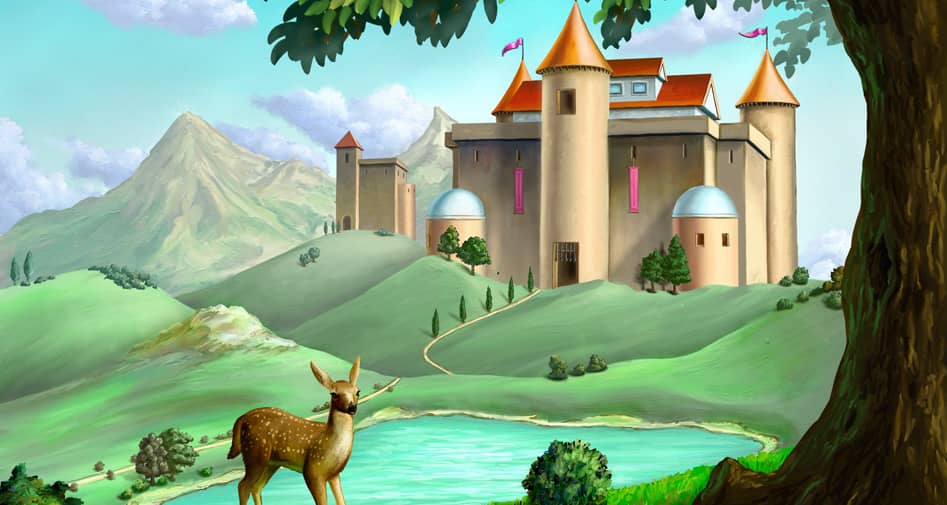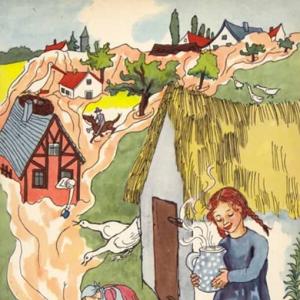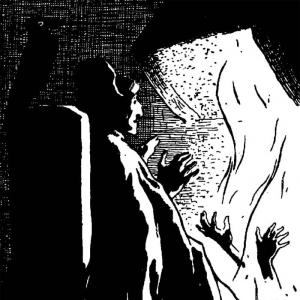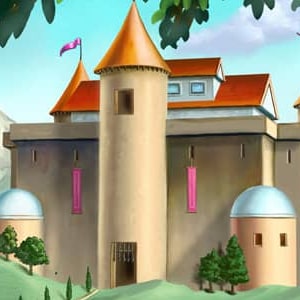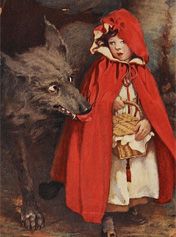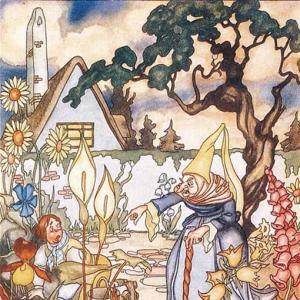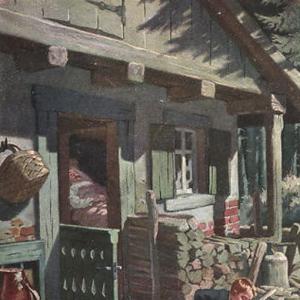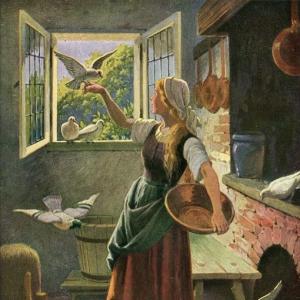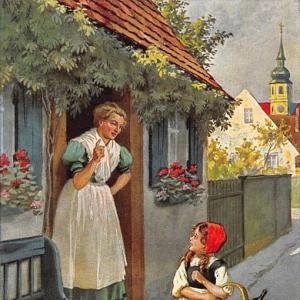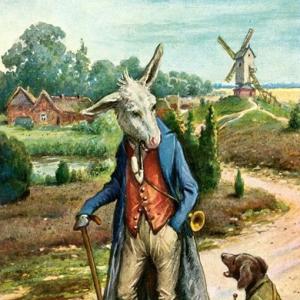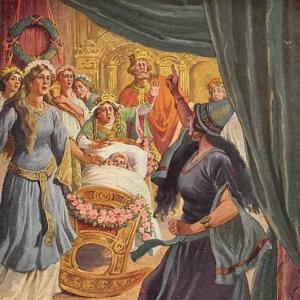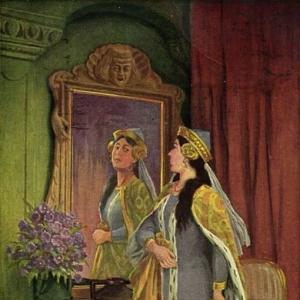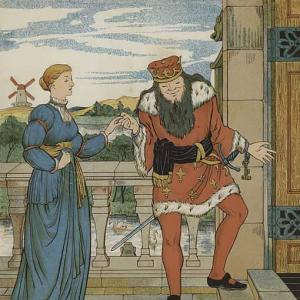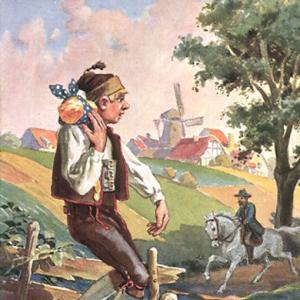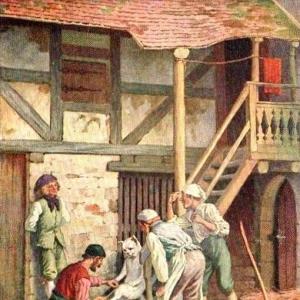Reading time for children: 3 min
Once upon a time a waggoner’s cart which was heavily laden with wine had stuck so fast that in spite of all that he could do, he could not get it to move again. Then it chanced that Our Lady just happened to come by that way, and when she perceived the poor man’s distress, she said to him, „I am tired and thirsty, give me a glass of wine, and I will set thy cart free for thee.“ – „Willingly,“ answered the waggoner, „but I have no glass in which I can give thee the wine.“ Then Our Lady plucked a little white flower with red stripes, called field bindweed, which looks very like a glass, and gave it to the waggoner. He filled it with wine, and then Our Lady drank it, and in the self-same instant the cart was set free, and the waggoner could drive onwards. The little flower is still always called Our Lady’s Little Glass.
 Learn languages. Double-tap on a word.Learn languages in context with Childstories.org and Deepl.com.
Learn languages. Double-tap on a word.Learn languages in context with Childstories.org and Deepl.com.Backgrounds
Interpretations
Adaptions
Summary
Linguistics
„Our Lady’s Little Glass“ is a short fairy tale collected by the Brothers Grimm, Jacob and Wilhelm, in their famous anthology, „Grimm’s Fairy Tales“ (also known as „Children’s and Household Tales“ or „Kinder- und Hausmärchen“ in German). The Brothers Grimm were German academics, linguists, and authors who lived in the late 18th and early 19th centuries. They are best known for their collection of folk tales, which includes popular stories such as „Cinderella,“ „Snow White,“ „Rapunzel,“ and „Hansel and Gretel.“
The Brothers Grimm collected and compiled these tales from various sources, including oral traditions, written manuscripts, and previous publications. Their intention was to preserve the cultural and historical heritage of German-speaking regions. Over the years, their collection has been published in various editions, with stories being added, revised, or removed.
„Our Lady’s Little Glass“ is not as well-known as some of the more famous Grimm fairy tales, but it is still a valuable piece of their collection. The story features Our Lady, or the Virgin Mary, who is a significant figure in Christianity. She is often depicted as a benevolent and compassionate figure, providing aid and comfort to those in need. The tale emphasizes themes such as faith, divine intervention, and the power of simple acts of kindness, which are common in many religious and spiritual narratives.
„Our Lady’s Little Glass“ is a simple, yet profound fairy tale that can be interpreted in several ways. Some key interpretations are:
Divine Intervention: The story highlights the idea of divine intervention, as Our Lady comes to the aid of the struggling waggoner. This could be seen as a reminder to trust in a higher power, and that assistance may come when least expected, even in the form of a miracle.
The Power of Faith: The waggoner’s willingness to give Our Lady wine, even without a proper glass, demonstrates his faith in her ability to help him. This act of faith is rewarded with the miraculous release of his cart. The story suggests that faith and trust in a higher power can bring about positive outcomes in difficult situations.
Humble Offerings: The waggoner, despite not having a proper glass, does not hesitate to offer wine to Our Lady in the modest vessel of a field bindweed flower. This can be interpreted as a message that even humble offerings can be valuable and appreciated, and that it’s the intention behind the act that truly matters.
Nature’s Connection to the Divine: The use of a flower as a vessel for wine emphasizes the connection between nature and the divine. This could suggest that even the simplest elements of nature hold a deeper meaning and have the power to connect us with the spiritual realm.
Gratitude and Appreciation: The story ends by mentioning that the field bindweed is still referred to as Our Lady’s Little Glass, which could symbolize the lasting impact of acts of kindness and the importance of remembering and honoring those who have helped us. It serves as a reminder to be grateful and appreciative of the assistance we receive in times of need.
There have been several adaptations of the fairy tale „Our Lady’s Little Glass“ from the Brothers Grimm, including:
The 1958 Russian film „The Tale of the Glass Casket,“ directed by Mikhail Ptashuk, which was based on the fairy tale.
The 1989 Italian film „The Glass Coffin,“ directed by Francesco Nuti, which was also based on the fairy tale.
The 2006 film „The Illusionist,“ directed by Neil Burger, which was loosely based on the fairy tale. The film follows the story of a magician who falls in love with a woman who is supposedly a princess, but who is actually a commoner.
The 2013 TV series „Once Upon a Time,“ which included a version of the fairy tale in its second season. The episode, titled „Into the Deep,“ featured the character of Aurora (Sleeping Beauty) trapped in a glass coffin.
The 2020 novel „The Glass Magician,“ by Caroline Stevermer, which is a retelling of the fairy tale set in the 1905 World’s Fair in St. Louis.
The 2021 Korean drama series „Mouse,“ which features a modern retelling of the fairy tale with a dark and suspenseful twist.
These adaptations have each put their own spin on the classic fairy tale, exploring different themes and adding new elements to the story.
„Our Lady’s Little Glass“ is a fairy tale by Brothers Grimm that tells the story of a waggoner whose cart, heavily laden with wine, gets stuck and he is unable to move it. Our Lady, or the Virgin Mary, happens to pass by and notices the man’s predicament. She offers to help him if he gives her a glass of wine as she is tired and thirsty. The waggoner agrees but realizes he has no glass to offer her the wine.
Our Lady then plucks a small white flower with red stripes, known as field bindweed, which resembles a glass. She hands it to the waggoner, who fills it with wine for her to drink. As soon as Our Lady drinks the wine, the cart is miraculously set free, and the waggoner is able to continue on his journey. The story concludes by noting that the field bindweed flower is still referred to as Our Lady’s Little Glass to this day.
The fairy tale „Our Lady’s Little Glass“ from the Brothers Grimm features simple yet rich linguistic elements that emphasize moral and symbolic themes.
Here’s a linguistic analysis of the text:
Structure and Style
Simple and Direct Prose: The narrative is straightforward, characteristic of many Grimm tales, ensuring accessibility for both children and adults.
Fairy Tale Formula: The story begins with „Once upon a time,“ a common trope in fairy tales that sets a timeless and universal tone.
Characters and Dialogue
Character Roles
Our Lady: Represents a benevolent, almost divine figure who intervenes in the waggoner’s plight. Her request for wine in exchange for aid introduces themes of reciprocity and divine assistance.
Waggoner: A common, humble character whose predicament and willingness to help despite his own troubles highlight virtues of generosity and faith.
Dialogue: The exchange between Our Lady and the waggoner is brief but impactful, focusing on the interaction and agreement that leads to the resolution. Our Lady’s request contrasts with the waggoner’s desperate situation, emphasizing the miraculous nature of the help she offers.
Symbolism and Imagery
The Wine and the Glass: Wine here symbolizes both a gift and a medium of transformation. The lack of a proper glass and the creation of one from a flower introduces creative problem-solving and magical realism.
Field Bindweed (Convolvulus arvensis)
Symbolic as a Glass: The flower becomes a vessel, its white and red stripes perhaps symbolizing purity and sacrifice or divine intervention.
Nature and the Divine: The use of a natural element (the flower) as a solution conveys a close relationship between nature and the divine or miraculous.
Setting: The ordinary setting of a waggoner and a stuck cart in a field highlights the intersection of everyday life with the miraculous.
Themes
Divine Assistance: Our Lady’s intervention indicates themes of divine presence and aid in times of trouble.
Reciprocity and Generosity: The story underscores the moral that even when resources are scant, a willingness to give brings rewards.
Name and Legacy: The flower being named „Our Lady’s Little Glass“ immortalizes the event, suggesting how stories and names preserve moral lessons and memories.
Repetition and Rhythm: The story’s repetition of the cart’s being „set free“ reinforces the miracle’s impact.
Alliteration and Sound: Subtle alliteration („waggoner,“ „wine,“ „willingly“) creates a pleasing auditory quality that is common in oral storytelling traditions.
In summary, „Our Lady’s Little Glass“ is crafted with linguistic features that convey a narrative of divine intervention and human virtue. Its symbolic use of natural elements and simple dialogue creates a tale that resonates with moral messages common in folklore.
Information for scientific analysis
Fairy tale statistics | Value |
|---|---|
| Number | KHM 207 |
| Translations | DE, EN |
| Readability Index by Björnsson | 37.4 |
| Flesch-Reading-Ease Index | 76.6 |
| Flesch–Kincaid Grade-Level | 9.2 |
| Gunning Fog Index | 12.2 |
| Coleman–Liau Index | 7.5 |
| SMOG Index | 9 |
| Automated Readability Index | 10.6 |
| Character Count | 832 |
| Letter Count | 637 |
| Sentence Count | 6 |
| Word Count | 161 |
| Average Words per Sentence | 26,83 |
| Words with more than 6 letters | 17 |
| Percentage of long words | 10.6% |
| Number of Syllables | 196 |
| Average Syllables per Word | 1,22 |
| Words with three Syllables | 6 |
| Percentage Words with three Syllables | 3.7% |
